
NGC 5917 is a spiral galaxy located in the constellation of Libra. It was discovered by John Herschel on 16 July 1835.

NGC 7029 is an elliptical galaxy located about 120 million light-years away from Earth in the constellation Indus. NGC 7029 has an estimated diameter of 129,000 light-years. It was discovered by astronomer John Herschel on October 10, 1834. It is in a pair of galaxies with NGC 7022.
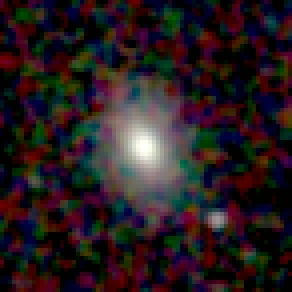
NGC 7033 is a lenticular galaxy located about 390 million light-years away in the constellation of Pegasus. It is part of a pair of galaxies that contains the nearby galaxy NGC 7034. NGC 7033 was discovered by astronomer Albert Marth on September 17, 1863.

NGC 7042 is a spiral galaxy located about 210 million light-years away in the constellation of Pegasus. NGC 7042 is part of a pair of galaxies that contains the galaxy NGC 7043. Astronomer William Herschel discovered NGC 7042 on October 16, 1784.

NGC 7080 is a barred spiral galaxy located about 204.5 million light-years away in the constellation of Vulpecula. It has an estimated diameter of about 100,000 light-years which would make it similar in size to the Milky Way. NGC 7080 was discovered by astronomer Albert Marth on September 6, 1863.
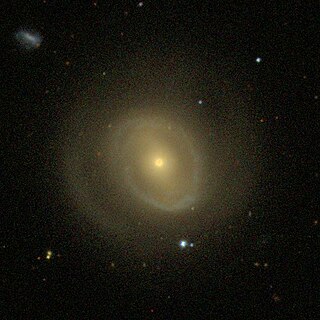
NGC 4454 is a barred spiral galaxy located about 123 million light-years away in the constellation of Virgo. NGC 4454 was discovered by astronomer William Herschel on April 17, 1784.
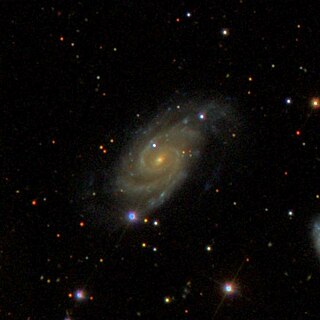
NGC 477 is a spiral galaxy in the constellation Andromeda. It is located approximately 250 million light-years from Earth and was discovered on October 18, 1786 by astronomer William Herschel.

NGC 4753 is a lenticular galaxy located about 60 million light-years away in the constellation of Virgo. NGC 4753 was discovered by astronomer William Herschel on February 22, 1784. It is notable for having distinct dust lanes that surround its nucleus. It is a member of the NGC 4753 Group of galaxies, which is a member of the Virgo II Groups, a series of galaxies and galaxy clusters strung out from the southern edge of the Virgo Supercluster.

NGC 7259 is a spiral galaxy approximately 66 million light-years away from Earth in the constellation of Piscis Austrinus. It was discovered by John Herschel on September 28, 1834.

NGC 5640 is a spiral galaxy approximately 660 million light-years away from Earth in the constellation of Camelopardalis. It was discovered by British astronomer William Herschel on December 20, 1797.
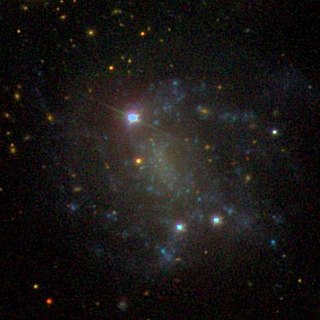
NGC 4523 is a Magellanic spiral galaxy located about 35 to 50 million light-years away in the constellation Coma Berenices. It was discovered by astronomer Heinrich d'Arrest on April 19, 1865. NGC 4523 is a member of the Virgo Cluster. A distance of for NGC 4523 was derived from using yellow supergiants in the galaxy as standard candles.
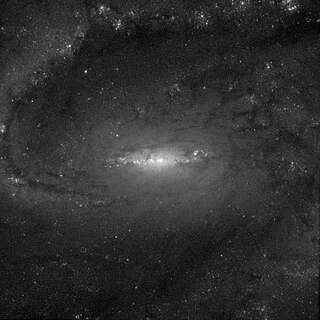
NGC 1255 is a barred spiral galaxy approximately 69 million light-years away from Earth in the constellation of Fornax.
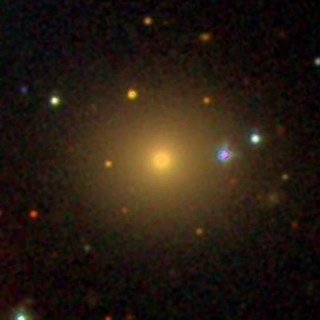
NGC 1259 is a lenticular galaxy located about 243 million light-years away in the constellation Perseus. The galaxy was discovered by astronomer Guillaume Bigourdan on October 21, 1884 and is a member of the Perseus Cluster.

NGC 1282 is an elliptical galaxy located about 230 million light-years away in the constellation Perseus. It was discovered by astronomer Guillaume Bigourdan on October 23, 1884. NGC 1282 is a member of the Perseus Cluster.
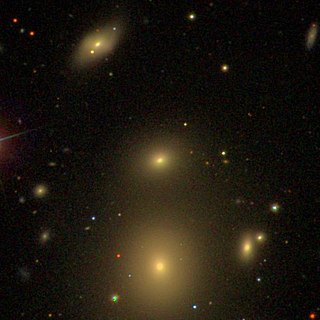
NGC 3841 is an elliptical or lenticular galaxy located about 300 million light-years away in the constellation Leo. It was discovered by astronomer John Herschel on March 25, 1827 is a member of the Leo Cluster.

NGC 3873 is an elliptical galaxy located about 300 million light-years away in the constellation Leo. The galaxy was discovered by astronomer Heinrich d'Arrest on May 8, 1864. NGC 3873 is a member of the Leo Cluster.

NGC 694 is a spiral galaxy approximately 136 million light-years away from Earth in the constellation of Aries. It was discovered by German astronomer Heinrich Louis d'Arrest on December 2, 1861 with the 11-inch refractor at Copenhagen.
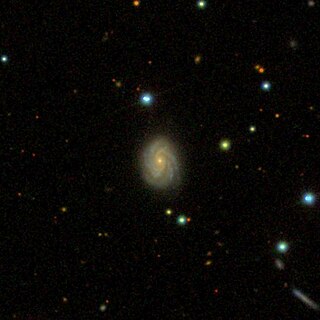
NGC 819 is a spiral galaxy approximately 302 million light-years away from Earth in the constellation of Triangulum. It forms a visual pair with the galaxy NGC 816 5.7' WNW.
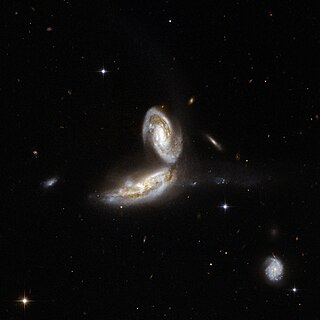
NGC 5331 is a pair of two interacting spiral galaxies in the constellation Virgo. They were discovered by William Herschel on May 13, 1793.

NGC 655 is a lenticular galaxy located 400 million light-years away in the constellation Cetus. It was discovered in a sky-survey by Ormond Stone on December 12, 1885.





















